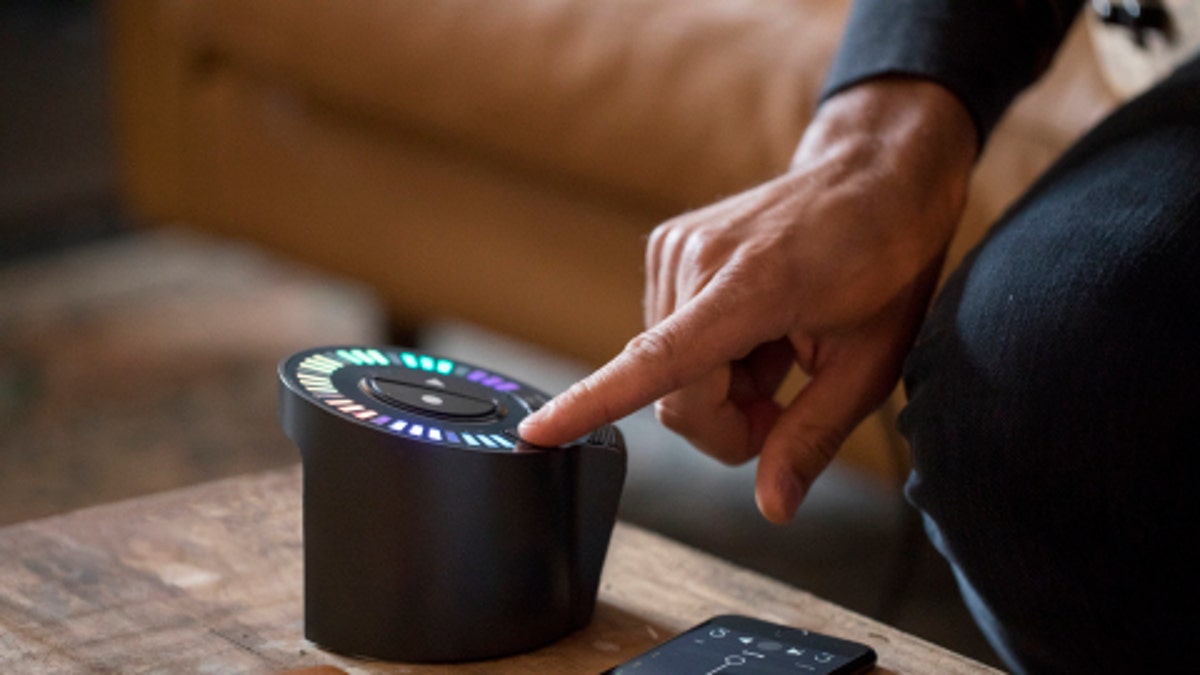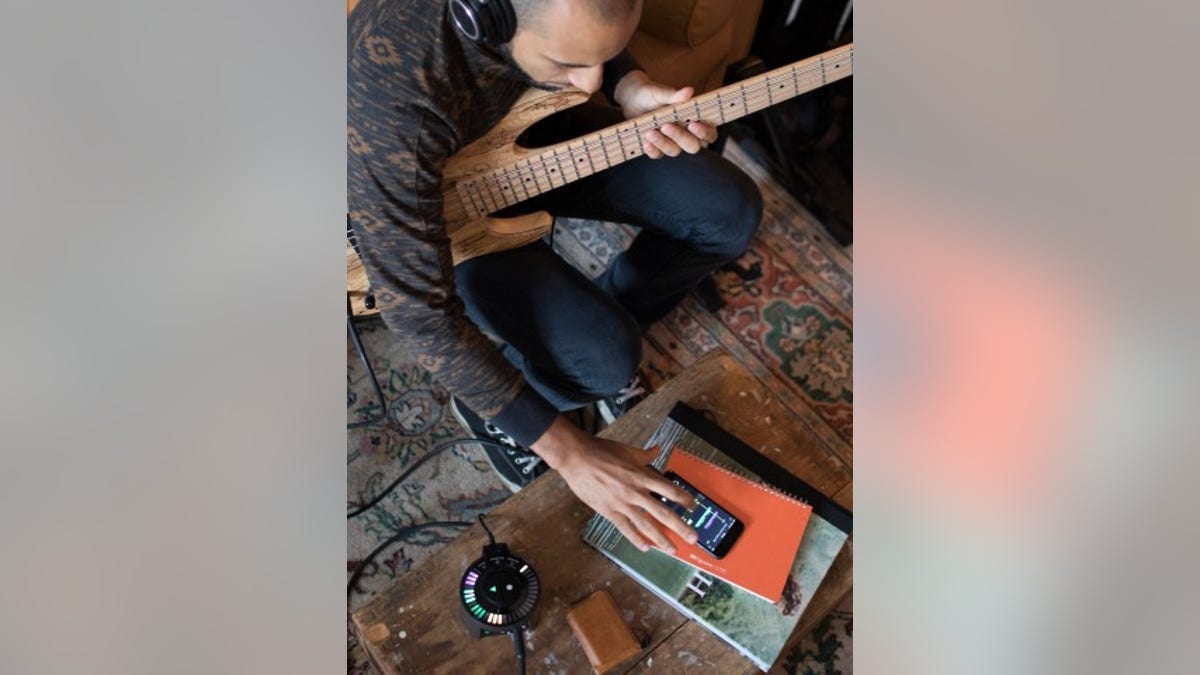
If you're ready to record that 172-track multitrack masterpiece knocking around in your brain, keep Googling, the Spire Studio is not for you. But if you are a DIY musician who wants to get songs done quickly without sacrificing sound quality, and then instantly share them in the digisphere, by all means, read on.
The Spire Studio mobile recorder is a breeze for anyone who has worked with multitrack machines, and easy to learn for recording novices. Its accompanying smartphone app lets you fine-tune mixes wherever and whenever you want, just by sliding little dots around the screen, replacing traditional multitrack sliders and knobs.
Want a vocal higher in the mix? Slide its accompanying dot up the screen. Want the horn coming out of the left speaker but way back in the mix? Slide its dot over to the left and down.
The Spire sits in a nice sweet spot between a good iPhone stereo mic attachment and an expensive home multitrack recorder, and for most applications, can replace both. The built-in microphone on the Spire is fantastic, its short list of onboard effects work great, and the accompanying multitrack app accomplishes stereo mixing in a refreshing, fun way.

The Spire can be used for everything from recording song ideas to putting together a pretty nice sounding multitrack demo. I used it for both with a dad band I play in. First, I recorded a song on 3-4 tracks (drum track, guitar, bass, vocal) and texted it to the other band members. We then took the Spire into our rehearsal space and recorded the whole band at once live onto a single track (drums + bass + guitar, all on one track), which turned out sounding surprisingly well balanced, seeing that all we did was put the thing in the middle of the room, hit “Sound Check,” which automatically sets optimum recording levels, played a couple measures, and then hit “Record.”
It was that easy.
We took that scratch track and overdubbed seven more tracks: electric guitars using the line-in feature on the back and the built in amp models (there are two), some horns using the built-in mic and delay effect option, and some vocals. The result was an eight-track demo recording we sent to friends and loved ones (mom loved it!) and that we can use as a template if we decide to book a recording studio.
In fact, if you work with it this way, the Spire can be a serious time and money saver for bands and musicians, allowing you to work through ideas and mixes fast and cheap before you punch a studio clock and start paying by the hour. (It's the fastest 8-track demo I've ever produced, and I've been using multitracks since the cassette tape 90s!)
And if you really know what you’re doing, most artists could probably use the Spire as a studio or multitrack recorder replacement, especially if you are mainly putting your music up online onto a service like Soundcloud or Bandcamp, or just sharing with friends. Eight tracks are plenty for most bands and singer-songwriters, and if you spend enough time with the Spire’s built-in effects, anyone should be able to come up with a good-enough-for-rock-and-roll sounding result.
You can share your mixes either in an email or text with a single click, or upload them straight to a service like Soundcloud in seconds. With its wireless WiFi and long battery life, it is a truly portable multitrack recorder that yields some pretty awesome results.
All this makes the Spire feel like a machine built by musicians, not techies.
Plus, the Spire looks cool. It's the size of a Google Home / Amazon Echo, so it takes up almost no space, and it's so visually attractive it doesn't have to be hidden away like a bulky, ugly multitrack board — which means it's always at the ready whenever your next big inspiration hits.




















